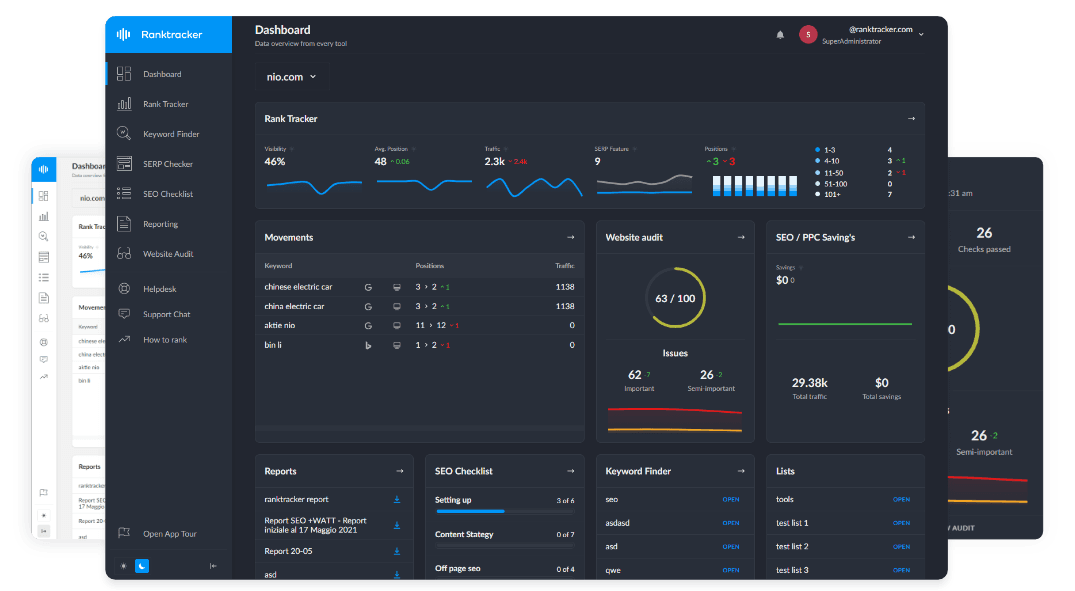Intro
Running an organic produce farm is about more than just growing food—it's about building trust, educating customers, and creating community around fresh, sustainable agriculture. Whether you're offering CSA subscriptions, selling at local markets, or delivering to restaurants and retailers, one thing is certain: your online visibility matters.
More and more people are searching for organic, local, and sustainable options online. If your farm isn’t showing up in those search results, you’re missing out on valuable opportunities to grow your customer base, increase your sales, and expand your impact. That’s where SEO (Search Engine Optimization) comes in. By optimizing your website for the right keywords, locations, and content, you can become the go-to source for fresh, organic produce in your area and beyond.
Why SEO Matters for Organic Farms
Modern consumers search online before making food-related decisions. They’re comparing farms, researching certifications, and looking for convenient ways to access fresh produce. If your farm doesn’t show up in these searches, you risk losing potential customers to larger distributors or better-optimized competitors.
-
Rank for searches like “organic farm near me” or “CSA box [city]”
-
Increase online orders, CSA signups, and market visits
-
Showcase your story, growing practices, and certifications
-
Attract local restaurants, co-ops, and wholesalers looking for reliable partners
Keyword Research That Reflects How People Search
Examples of high-converting keywords
-
organic farm [city/state]
-
local CSA vegetable box [location]
-
organic produce delivery near me
-
farmers market vendor [city]
-
heirloom tomatoes for sale [state]
-
buy organic fruit direct from farm
Use a tool like Ranktracker’s Keyword Finder to discover relevant, low-competition keywords based on seasonality, product demand, and geographic location.
On-Page SEO to Tell Your Story and Drive Conversions
Key elements to optimize
-
Use H1 for your main page titles and H2/H3 for subheadings
-
Write compelling meta titles and descriptions with keywords and your city or state
-
Include pages for each of your services: CSA program, farm stand, online store, wholesale, or market schedule
-
Add strong calls to action like “Join Our CSA,” “Shop Our Produce,” or “Visit the Farm”
-
Highlight your organic certification, sustainability practices, and customer testimonials
FAQs are also valuable for both SEO and user experience. Cover topics like “How does CSA work?” or “Do you deliver to [region]?”
Local SEO to Reach Nearby Shoppers and Restaurants
Most organic farms rely on their local community to thrive. Local SEO ensures your farm shows up in searches from people nearby who want to buy fresh produce, visit your stand, or join your CSA.
Steps to improve local SEO
-
Create and verify your Google Business Profile with accurate info, images, and hours
-
Use city and neighborhood names throughout your website
-
Embed a map and list pickup or delivery zones for your CSA
-
Get listed in local directories, organic farming associations, and farmers market websites
-
Ask satisfied customers and restaurant partners to leave Google reviews
If you deliver to more than one city, consider creating individual landing pages for each location you serve.
Content Marketing That Educates and Builds Loyalty
Blog posts and educational content attract traffic, position you as a local authority, and keep your audience engaged throughout the year.
Content ideas
-
“What’s Growing at the Farm This Month”
-
“How We Grow Without Chemicals”
-
“5 Ways to Cook with Kohlrabi”
-
“How We Harvest Our Lettuce”
-
“How to Store Your Weekly CSA Box”
Use real photos, videos, and your unique voice to make the content authentic, which both users and search engines reward.
Visual SEO That Builds Trust and Interest
Photos and videos of your farm, produce, and team are essential for building trust and improving your site’s SEO performance.
Visual content tips
-
Use high-resolution, original images from your harvests, CSA boxes, and fields
-
Add descriptive alt text like “organic zucchini freshly picked at [Farm Name]”
-
Name images with keywords (e.g., summer-CSA-box.jpg)
-
Embed video tours, packing-day clips, or recipe demos
Google rewards engaging content that keeps users on your site—great visuals help make that happen.
Backlink Building to Grow Your Authority
Backlinks from trusted websites signal to search engines that your site is credible.
Strategies to earn backlinks
-
Get featured on local food blogs or sustainability websites
-
Ask restaurant clients to link back to your site
-
Write guest posts for health, nutrition, or gardening publications
-
Join directories like LocalHarvest, EatWild, or USDA Organic
-
Host farm events or workshops and get listed in community calendars
Use Ranktracker’s Backlink Checker to track progress and find new opportunities.
Ongoing SEO Monitoring and Growth
SEO is a long-term strategy. It requires regular performance checks, updates, and content refinement.
Use Ranktracker to
-
Monitor keyword rankings for your top products and services
-
Identify seasonal search trends
-
Audit your site for speed, mobile responsiveness, and technical issues
-
Track which content and pages drive the most traffic or conversions
With consistent care, SEO becomes a high-performing channel for your farm’s growth.
Final Thoughts
Organic produce farm SEO connects your values with the right customers. By optimizing for local and product-based searches, publishing helpful content, and building trust through visibility, your farm can thrive both in the field and in search results.
Whether you're scaling your CSA or building an online store, SEO ensures your audience finds you at the exact moment they’re ready to support local, eat better, and choose organic.

